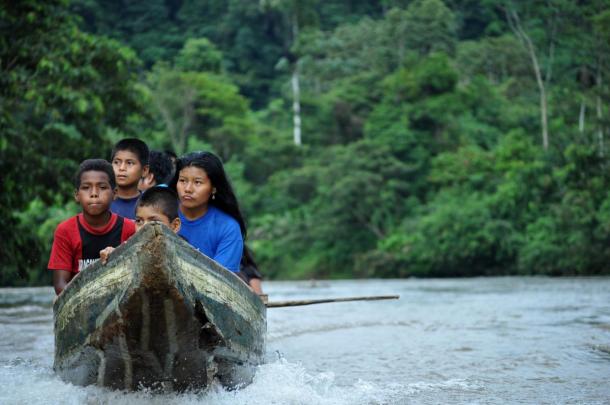
The River Cayapas runs through a remote of jungle in the north of Ecuador. The 43 communities living there are as far as three hours by canoe from the nearest town, Borbón.
Far from the healing hands of conventional medicine, its inhabitants have for centuries looked to shamans. But in recent years doctors and shamans have coexisted in a new health system where the magical and the scientific mix.
The people of the Cayapas region believe an evil being with the ability to make them sick lives in the river. The name of this mysterious being is Pullujmu. The shamans, called mirukus in the local language, "treat" the illness brought about by this creature with night rituals involving chanting, sacred stones, alcohol and hallucinogens.
If the Cayapas River is not really magical it is, at least, a very special corner of the planet. It is so remote that there is not a centimetre of pavement, and you will not hear a mobile phone ring. Health care as we know it barely gets to the area.
There is one modest clinic here. Thirteen doctors treat 9,000 inhabitants, mostly indigenous people from an ethnic group called Chachis.
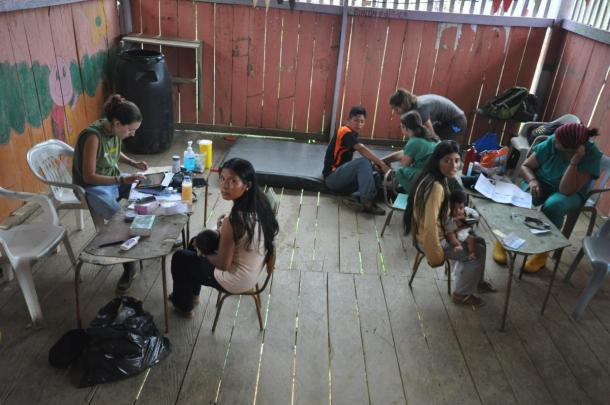
The farthest communities are two hours from the village of Zapallo Grande, where the clinic is located. In the dry season the river doesn’t even get to some of these communities.
The Chachis divide their afflictions between “inside illnesses” and “outside illnesses”. That is, the ones that can be cured inside the river region and the ones that can’t. But most of the inhabitants of the Cayapas have never left the riverbank, so the miruku is the family doctor.
“The miruku is the first option for the 99 per cent of the population. Only if he cannot cure the patients will they go to the doctor. Witch doctors are still at the centre of the community,” says Luis Ramiro Teopanta, the dentist at the Zapallo clinic.
It was only a couple of decades ago that conventional medicine began coexisting with witchcraft in the area. It got here through vaccination and programmes to eradicate illnesses such as malaria and Onchocerciasis, a kind of blindness caused by the bite of a mosquito that lives in the river.
Chachis are now used to seeing medical doctors in mobile clinics. They say “the Spanish” are coming, referring to the members of a Spanish NGO, Asociación Amigos del Cayapas (Friends of Cayapas). The group visits twice a year to offer primary care in the most remote communities.
“It is fascinating to see how this indigenous group has developed a hybrid concept of medicine. That involves healing both with mirukus and scientific doctors,” says the anthropologist Elisa García Mingo.
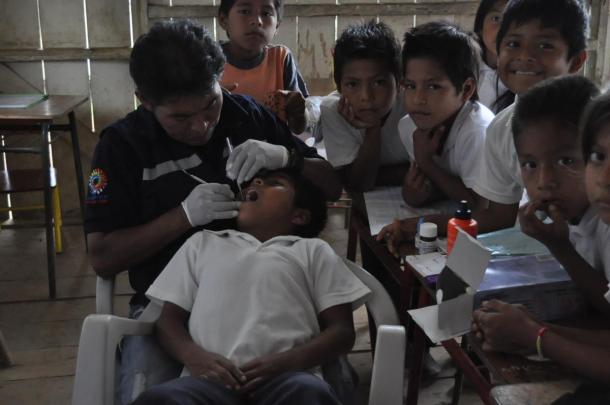
Luis Ramiro Teopanta, known here as “Luchito”, was born in the mountains of Ecuador and has worked here for 16 years as a dentist. He has witnessed the merging of both disciplines.
During the day he performs routine dental procedures. At night, from his bed, he hears the songs of mirukus while giving their treatments. These rituals are supposedly secret, Teopanta explains.
In its 2008 constutution,the Ecuadorian State recognised the work done by traditional witch doctors. The constitution states that each person is free to decide what kind of medicine to use to be cured.
From the field Teopanta sees things differently. “It is true that here we coexist and patients see us like complementary options. The problem is that there are not clear instructions on how to work together. The rules say that doctors have to mediate to provide health care acknowledging this intercultural component. But no one gives any kind of training here on how to do it. In reality it is difficult to give space to each other. Many doctors here don’t want to work together with shamans because they don’t recognise their methods as valid”.
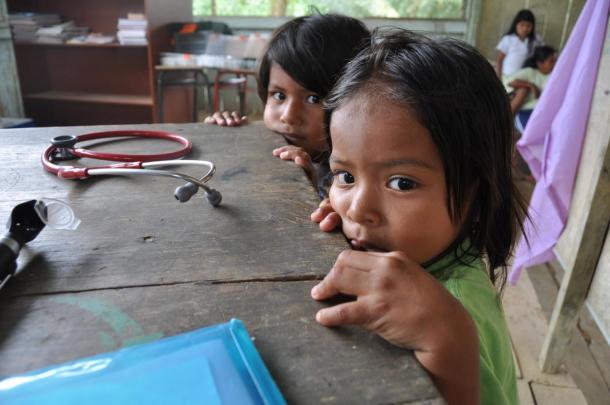
The clearest case of the need of this coexistence is the collaboration of midwives with obstetricians. “Here 90 per cent of children are born at home, even though the law say that women have to give birth in hospital. A better involvement between both [systems] would result in fewer deaths during birth,” says Teopanta.
One of the most important contributions of Friends of Cayapas is creating a list of needs at Telembí. “When we asked the government for more infrastructure in the area they answered that there is no need because here there is no census of patients, say Francisco Caicedo, an Ecuadorian member of the group.
So during each visit, “the Spanish doctors” dedicate a long time to gathering data so the government will recognise the need for more resources in the health centre. According to figures provided by the Zapallo Grande clinic, the Spanish NGO has visited 70 per cent of the population of Cayapas.
Ana García Mingo, a doctor from Madrid, is the president of the NGO.
I asked her if it was awkward for a medical NGO to work with witchdoctors.
“No, it is the opposite,” she said. “They are very valuable characters in the communities. They are concerned about the patients health issues and they are the ones that are always close and following up. They don’t assume they can cure everything. When an illness requires surgery they are the first advising patients to get out of the river.” García-Mingo says.
The NGO carried out an anthropological study called “The right to heal” in 2013.
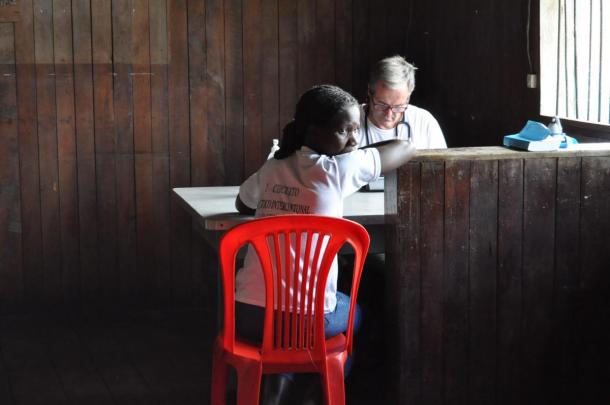
In one interview, the miruku of the community called La Tranca said: “People come to me when they are ill. If I can cure them I make them spend a night with me. If I can’t I tell them to visit a doctor.” The price of a night with a miruku is USD$10.
Some of the patients of the Cayapas have told the doctors about treatments with hallucinogenic drugs. In particular they talk about a dried liana vine called pingde. The anthropologists carrying out the investigation for the Asociación Amigos del Cayapas have also come across this kind of drug.
Both the dentist Teopanta and Ana García Mingo agree that in this river the witchdoctors don't do any harm. “There are witchdoctors in other cultures that can make the situation worse, but we have never seen a miruku’s treatment damaging anyone’s health. So why should we argue with them?”
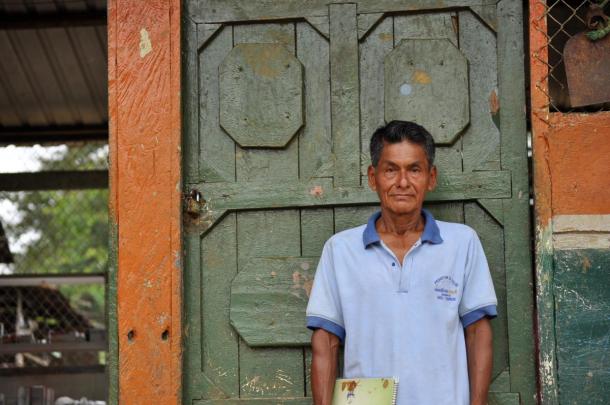
“They treat with palm leaves, menthol, herbs and chanting but there is no violence. We have a holistic concept of health, meaning that it is as important being healthy as feeling health in mind and body. So if they help people stay calm that is all right,” says García Mingo.
Nevertheless Teopanta recognises that there are cases where the practices of doctors and shamans are contradictory. The dentist says that witch doctors attempt to cure diarrhoea by singing to the patient for three nights in a row.
“You need hydration, drinking a lot of water when you suffer diarrhoea. They don’t give any water. We have had cases where people arrive to the hospital in a bad condition because their condition has been made worse,” says Teopanta.